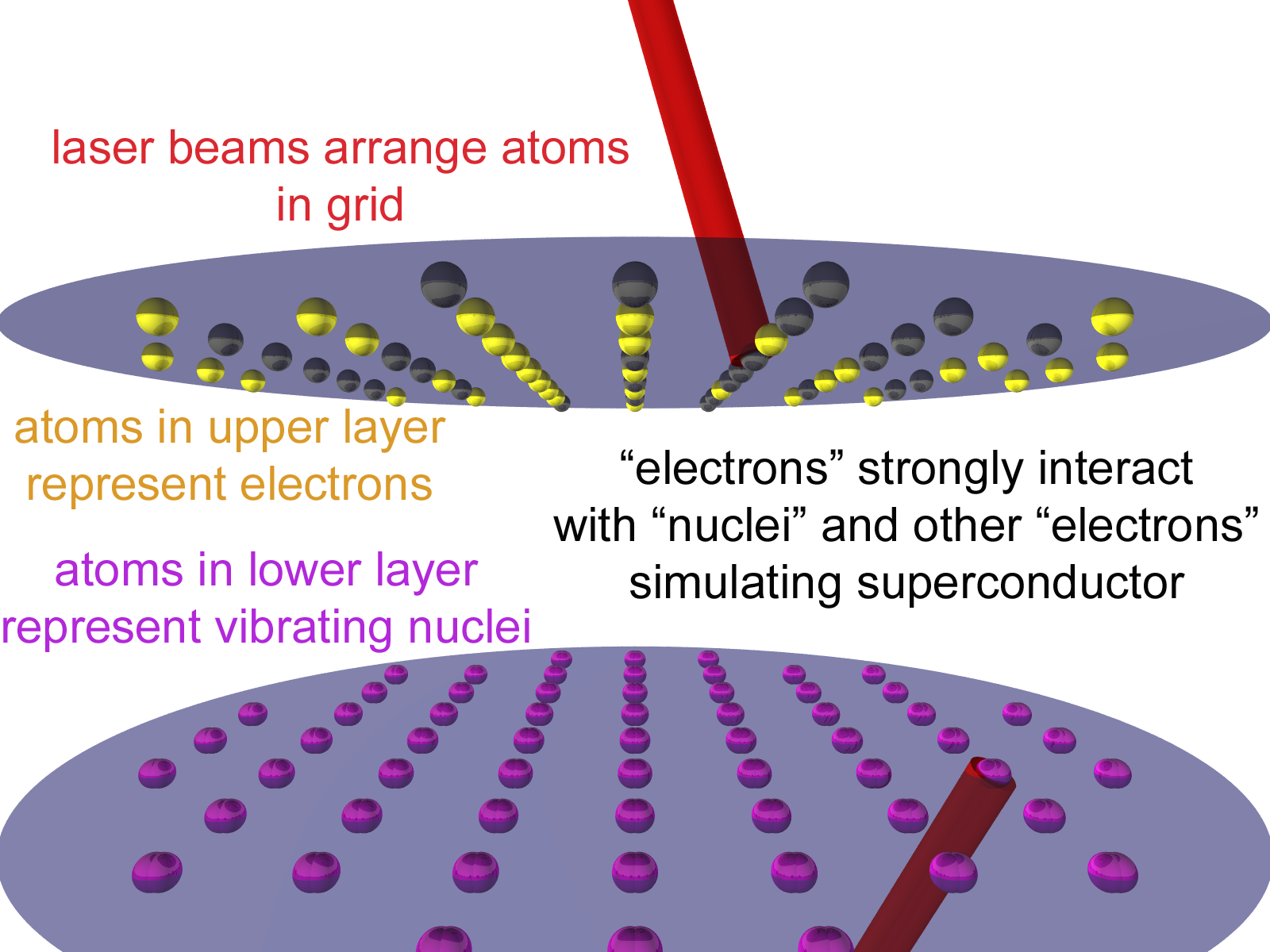Cold Rydberg atoms and quantum simulators

Rydberg states are formed when atoms are highly excited, so that they are almost ionised. As such, they have large dipole moments and interact strongly over large distances. In collaboration with Calum MacCormick, I have investigated the use of these atomic states to create quantum simulators for polarons and superconductors. The figure shows a schematic of our proposed quantum simulator for unconventional superconductors, published in Physical Review Letters. In the quantum simulator, there are two layers of cold atoms. The optical lattice in the lower layer is set up in such a way that the atoms can vibrate, but not move between lattice sites, representing the vibrations of nuclei known as phonons. The atoms in the upper layer are allowed to move, but have a strong on-site repulsion to represent electrons. Atoms in the two layers interact through the dipole moments to represent the interaction between electrons and phonons. More about our work on quantum simulation of electron-phonon interactions can be found in the following papers.
- Quantum simulation of electron-phonon interactions in strongly deformable materials.
J.P. Hague, C. MacCormick.
New Journal of Physics 14 (2012) 033019 [Open Access] - Bilayer of Rydberg atoms as a quantum simulator for unconventional superconductors. J. P. Hague, C. MacCormick.
Phys. Rev. Lett. 109 (2012) 223001 [arXiv:1111.5594] [pdf]